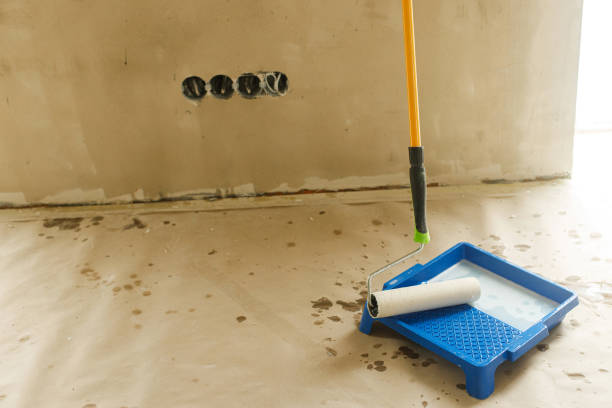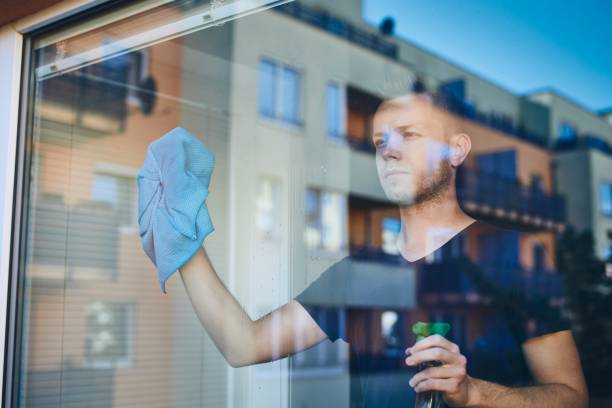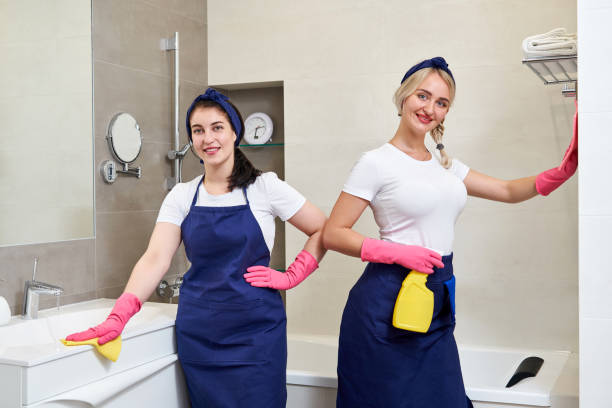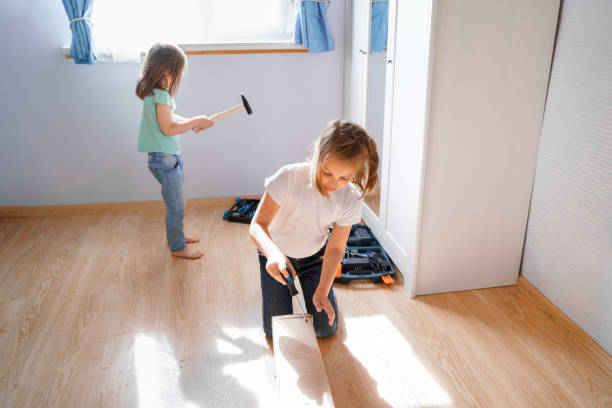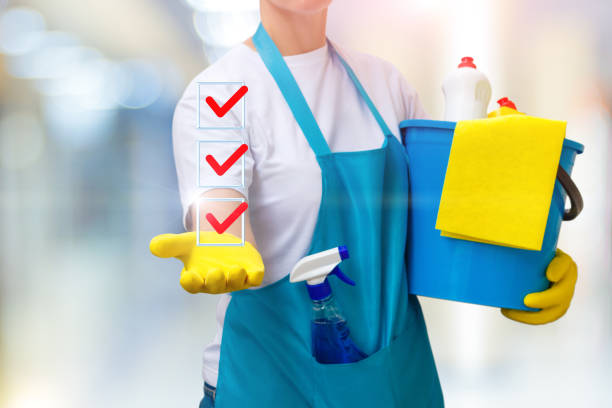You may think of the solid walls of a skyscraper or a house when you hear “concrete.” Concrete is a fantastic material for indoor and outdoor flooring. Concrete floors are durable and low maintenance when sealed properly. Sealing concrete floors makes them virtually impervious to dirt and stains.
Other benefits of sealed concrete flooring include:
There are no gaps, grout lines, or joints that dirt can be trapped in.
Water- and scratch-resistant.
Sealants can last from 3 to 10 years, depending on their type.
Concrete floors can also be very stylish, particularly when used in minimalistic or industrial settings. They are the flooring that has it all.
Basic Concrete Floor Maintenance
Even though concrete is a very durable flooring material, it needs to be maintained daily in order to keep its pristine appearance for many years. All you need to maintain concrete floors is a few simple tools and a few easy steps.
To remove dust and debris from indoor concrete floors, you should sweep or dry mop them every day. You can damp-mop if there are any greasy spills or grime that cannot be swept up. Remember that even sealed concrete may stain, so be sure to remove spills quickly.
You may need to hire a professional cleaner to restore your concrete floor to its former glory if it has deep-seated dirt.
Clean, Sealed Concrete Flooring
The easiest type of concrete floor to clean is sealed or treated concrete. This type of flooring is used in many workplaces because it’s virtually maintenance-free and highly stain-resistant. It can also withstand thousands upon thousands of steps.
You’ll need to use a broom du, st mop, or vacuum cleaner, a wet mop, and a mild, non-acidic, non-abrasive cleaning solution so that the sealant doesn’t wear out or break down prematurely. You can use Castile soap or dishwashing detergent instead of a cleaner if you don’t want to buy one.
Remove dust and debris using your preferred method. It will prevent scratches on polished concrete floors. You can then mop the floor after removing all of the grit. Mix the recommended amount of your cleaner according to the label. For example, use two teaspoons if you are using castile soap or dishwashing liquid.
Use this solution to mop the floor, then rinse it with clean water and let it air dry. Vacuum or sweep the floor every day and mop it at least once per week. If the floor is not used much, the interval between moppings can be extended.
Cleaning Exterior Concrete or Unsealed Concrete
You’ll need a garden hose or large bucket, a heavy-duty broom with stiff bristles, or a vacuum cleaner. Also, you will need trisodium-phosphate and the stain remover of your choice. You can make the job easier if you have a pressure-washer.
As with indoor concrete floors, the first step to cleaning is to remove all dirt and debris. For this, use a stiff-bristled brush or broom. Or, use a high-powered vacuum. Mix the trisodium and water in the right proportions, then wash the floor. Follow the instructions on the trisodium to get the best result.
If you do not have a power wash, you can wet the concrete with a garden hose and scrub it using the stiff, bristled brush you used earlier to get the trisodium to the concrete. After rinsing thoroughly, let the concrete air dry.
Follow the instructions below to remove specific stains:
Tire marks. You can use a degreaser to remove the tire markings from the concrete. These are most commonly found in garages. Let it sit on the concrete for 4 to 5 hours, then rinse thoroughly.
Grease and oils. Use a degreaser that is strong to remove oil and grease stains from untreated concrete. You can also sprinkle cornstarch or even kitty litter to absorb grease. It can take from three to five working days, depending on the depth of the grease. You can then use a vacuum to remove any remaining particles.
Rust. White vinegar is sufficient for light rust. Let it sit for 30 minutes to an hour, then scrub with a stiff bristle and rinse thoroughly. Use a rust-removing product that contains oxalic acids for heavier stains.
Food stains. You can use your favorite dishwashing liquid to remove food stains. If the stain is oily, apply the liquid directly to the stain. Otherwise, mix it with water and scrub the stain using a suitable brush. Rinse the stain thoroughly with plain water.
When using cleaning chemicals, always wear protective gear like gloves and goggles. Don’t use bleach in combination with other cleaners.
You might think that maintaining indoor and outdoor concrete flooring is a difficult task. When you compare concrete to other floors, the maintenance is remarkably easy. Follow these tips, and don’t hesitate to ask for help if needed.


